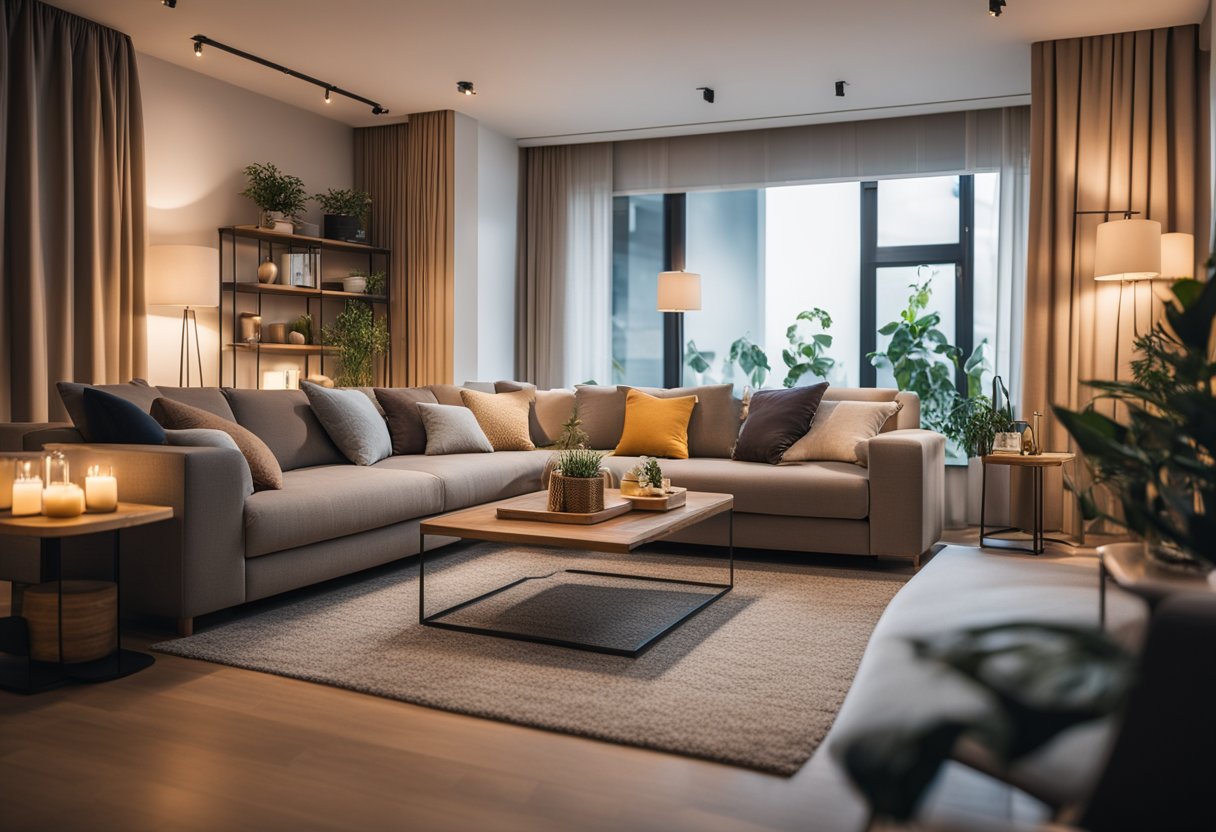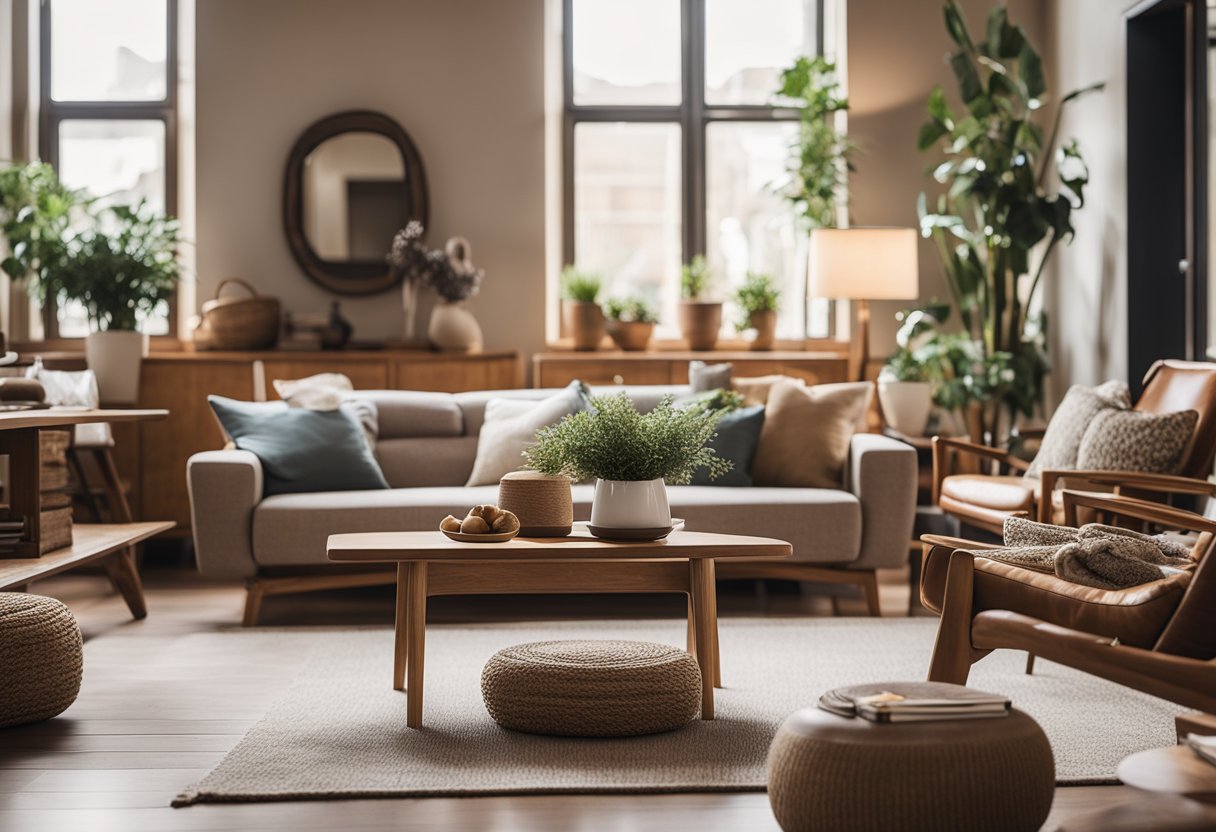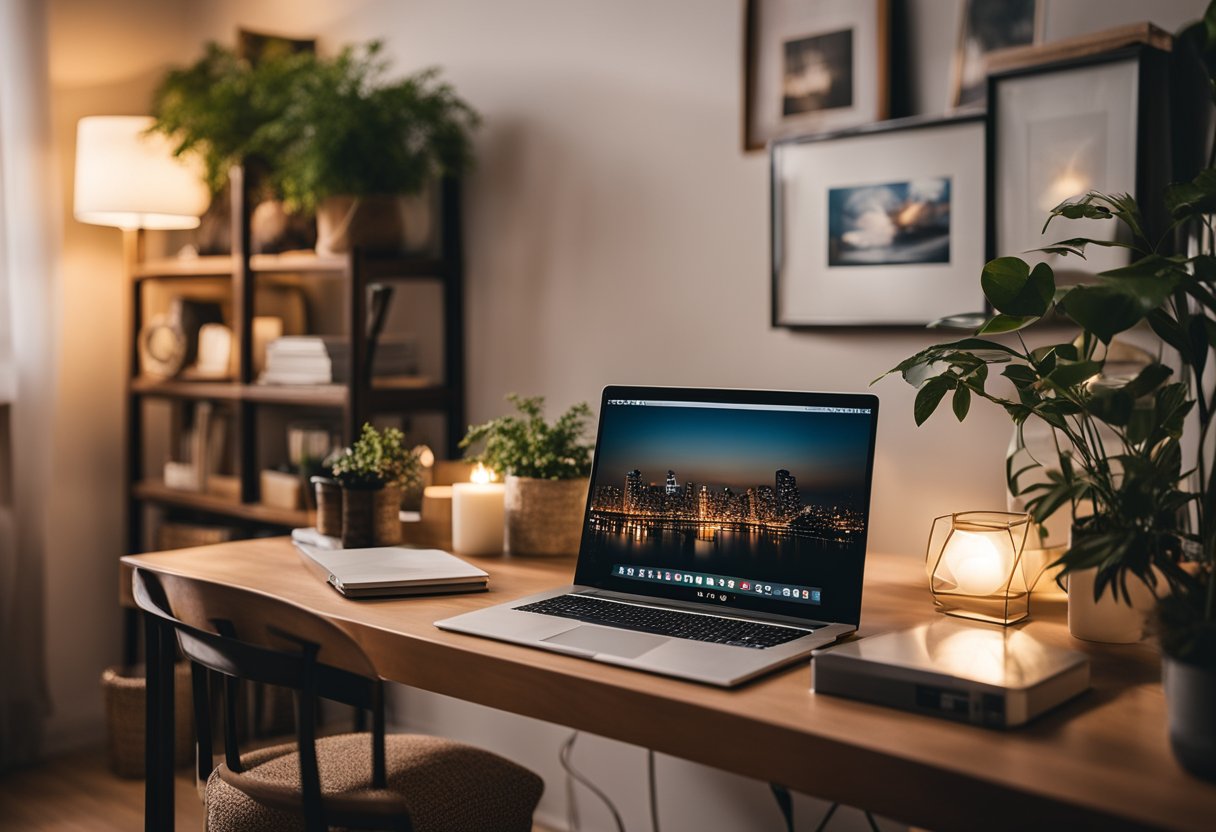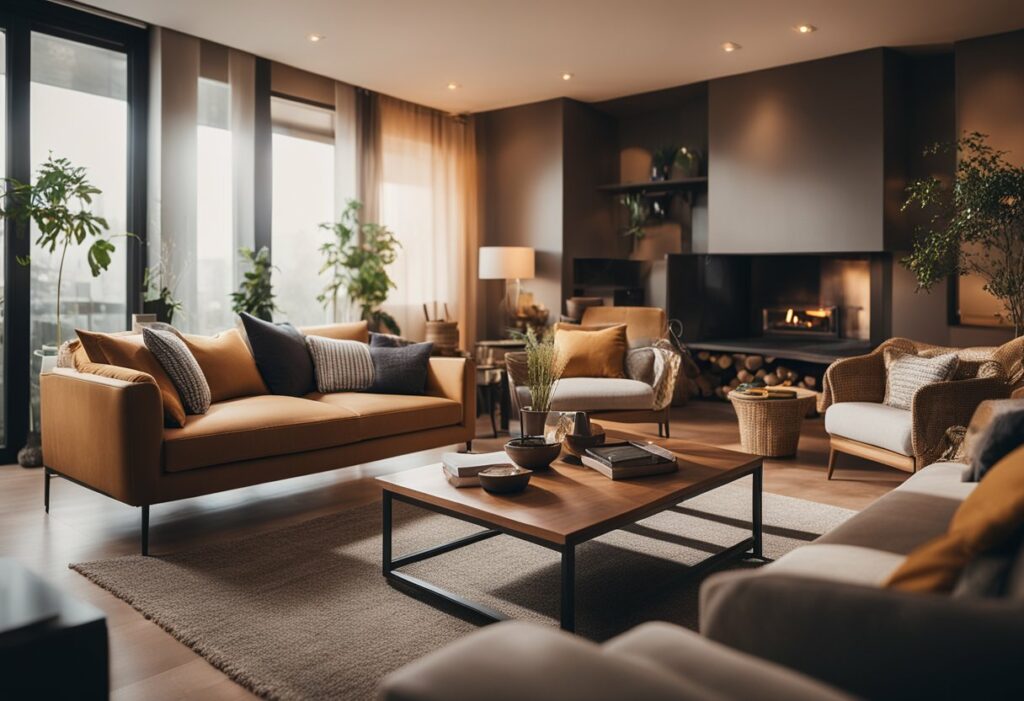MBTI Interior Design: How Your Personality Type Can Transform Your Home
Do you ever walk into a room and feel immediately at ease, or on edge? Your response to a space may be influenced by your Myers-Briggs Type Indicator (MBTI) personality, which can also inform your interior design choices. Understanding how your personality type affects your design preferences can help you create a space that not only looks beautiful, but also feels like home.

By using the MBTI to inform your design choices, you can create a space that is tailored to your unique personality. Whether you’re an extroverted entertainer who loves bold, bright colours, or an introverted thinker who prefers calming neutrals and natural materials, there’s a design style that will suit your personality perfectly. With the right design choices, you can create a space that feels like a true reflection of who you are.
Key Takeaways:
- Your Myers-Briggs Type Indicator (MBTI) personality can influence your interior design preferences.
- By using the MBTI to inform your design choices, you can create a space that is tailored to your unique personality.
- Whether you’re an extroverted entertainer or an introverted thinker, there’s a design style that will suit your personality perfectly.
Understanding MBTI in Interior Design

If you’re interested in interior design, you may have heard of MBTI, or the Myers-Briggs Type Indicator. This personality assessment tool can also be used to help you understand your design preferences and create a space that reflects your unique personality.
The Basics of MBTI and Interior Design
The Myers-Briggs Type Indicator is a personality test that categorises people into 16 different personality types based on four dichotomies: extraversion vs. introversion, sensing vs. intuition, thinking vs. feeling, and judging vs. perceiving. Each personality type has unique characteristics and tendencies that can influence their design preferences.
Interior design, on the other hand, is the art and science of creating functional and aesthetically pleasing spaces. It involves choosing colours, textures, furniture, and decor that work together harmoniously to create a specific mood or atmosphere.
Psychology Behind Design Choices
Your design choices can reflect your personality type and energy. For example, if you’re an introverted person, you may prefer a calm and peaceful space with soft lighting, warm colours, and comfortable furniture. On the other hand, if you’re an extroverted person, you may prefer a bright and bold space with lots of natural light, vibrant colours, and eye-catching decor.
MBTI Personality Types and Design Preferences
Your personality type can also influence your design preferences in other ways. For example, if you’re a sensing type, you may prefer design elements that are practical and functional, while an intuitive type may prefer design elements that are abstract and creative. If you’re a thinking type, you may prefer a minimalist design with clean lines and simple decor, while a feeling type may prefer a more eclectic design with lots of personal touches and sentimental items.
In conclusion, understanding your MBTI personality type can help you create an interior design that reflects your unique personality and energy. By incorporating design elements that appeal to your personality type, you can create a space that feels like home and supports your overall wellbeing.
MBTI-Inspired Design Themes

Your MBTI personality type can significantly influence your interior design style. Here are some design themes inspired by each MBTI personality type:
INFJ: The Advocate’s Nook
As an INFJ, you value harmony and beauty, and you enjoy creating a space that reflects your caring and compassionate nature. You can create a cosy and intimate space by incorporating soft textures, warm colours, and meaningful decorative items. Consider adding a comfortable armchair, a bookshelf filled with your favourite books, and a few plants to create a calming and relaxing atmosphere.
INTJ: The Architect’s Vision
As an INTJ, you have a logical and analytical mind, and you enjoy creating a space that reflects your independent and creative nature. You can create a minimalist and functional space by incorporating clean lines, neutral colours, and simple decorative items. Consider adding a large desk, a comfortable chair, and a few pieces of modern art to create a space that inspires your creativity and curiosity.
INFP: The Mediator’s Retreat
As an INFP, you value creativity and individuality, and you enjoy creating a space that reflects your idealistic and compassionate nature. You can create a unique and eclectic space by incorporating bold colours, interesting textures, and meaningful decorative items. Consider adding a comfortable sofa, a few colourful cushions, and a few pieces of vintage furniture to create a space that inspires your creativity and curiosity.
ENFP: The Campaigner’s Mosaic
As an ENFP, you value creativity and diversity, and you enjoy creating a space that reflects your outgoing and curious nature. You can create a vibrant and eclectic space by incorporating bright colours, interesting patterns, and unique decorative items. Consider adding a few colourful rugs, a few pieces of ethnic art, and a few plants to create a space that inspires your creativity and curiosity.
ISTJ: The Logistician’s Order
As an ISTJ, you have a practical and efficient mind, and you enjoy creating a space that reflects your logical and organised nature. You can create a functional and minimalist space by incorporating clean lines, neutral colours, and practical decorative items. Consider adding a few storage boxes, a few shelves, and a few pieces of modern furniture to create a space that inspires your productivity and efficiency.
ISFJ: The Defender’s Harmony
As an ISFJ, you value harmony and tradition, and you enjoy creating a space that reflects your caring and dependable nature. You can create a cosy and welcoming space by incorporating soft colours, classic patterns, and meaningful decorative items. Consider adding a few comfortable armchairs, a few family photos, and a few pieces of vintage furniture to create a space that inspires your compassion and dependability.
ENTJ: The Executive’s Domain
As an ENTJ, you have a strategic and ambitious mind, and you enjoy creating a space that reflects your confident and assertive nature. You can create a modern and elegant space by incorporating bold colours, sleek lines, and sophisticated decorative items. Consider adding a large desk, a few pieces of contemporary art, and a few pieces of luxury furniture to create a space that inspires your leadership and success.
ISTP: The Virtuoso’s Workshop
As an ISTP, you have a curious and adventurous mind, and you enjoy creating a space that reflects your analytical and independent nature. You can create a functional and minimalist space by incorporating clean lines, neutral colours, and practical decorative items. Consider adding a few tools, a few mechanical parts, and a few pieces of industrial furniture to create a space that inspires your creativity and curiosity.
Frequently Asked Questions

How can your MBTI influence your interior design preferences?
Your Myers-Briggs Type Indicator (MBTI) personality type can influence your interior design preferences in various ways. For instance, an introverted personality type may prefer a minimalist and clutter-free design, while an extroverted personality type may opt for a more vibrant and lively space. Similarly, a thinking personality type may prefer a more structured and organized space, while a feeling personality type may prefer a more cozy and welcoming space.
What interior design styles are best suited for an ISTJ personality?
ISTJ personality types are known for their practical and logical nature. As such, their interior design style is likely to be clean, simple, and functional. They may prefer a minimalist design with neutral colours, simple furniture, and a clutter-free space.
Which personality types excel in a career in interior design?
While any personality type can excel in a career in interior design, certain personality types may have an advantage. For instance, an ENFJ personality type may excel in a career in interior design due to their excellent communication and interpersonal skills. Similarly, an ISTJ personality type may excel in a career in interior design due to their practical and logical nature.
Can taking an interior design personality quiz help tailor your home aesthetics?
Taking an interior design personality quiz can help you identify your personality type and understand your design preferences. This can help you tailor your home aesthetics to suit your personality and create a space that feels comfortable and welcoming. However, it is important to note that no quiz can perfectly capture your personality, and your design preferences may evolve over time.
What are the characteristic features of an INFJ’s interior design style?
INFJ personality types are known for their creativity and empathy. As such, their interior design style may be artistic, unique, and reflective of their personal values. They may prefer a space with warm colours, comfortable furniture, and meaningful decor items.
How does one’s MBTI reflect in the choice of colours and textures in home decor?
Your MBTI personality type can influence your choice of colours and textures in home decor. For instance, an extroverted personality type may prefer bold and bright colours, while an introverted personality type may prefer more muted and calming colours. Similarly, a sensing personality type may prefer natural and earthy textures, while an intuitive personality type may prefer more abstract and unconventional textures.



